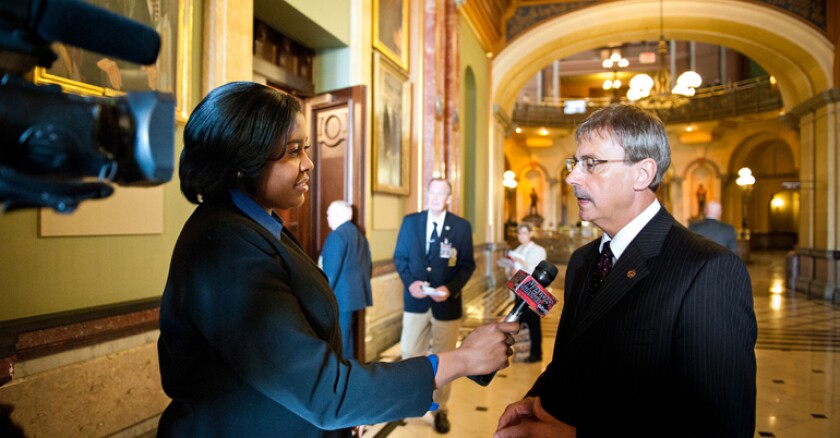The study, released by the Pew Research Center June 10, shows that nearly 1,600 reporters worked from state capitols between August 2013 and March 2014. Fewer than half of those reporters -- 47 percent -- covered state government, including statehouses, governors and state agencies, from the state capitols full-time.
The rest did not cover the capitol year-round. The part-timers included students who reported for only a semester, extra hands brought in to cover legislative sessions or reporters who split their time between their company’s home offices and the state capitol.
The decline of newspaper reporters at state capitols is well-documented. The American Journalism Review showedpersistent declines in their ranks between 1998 and 2009. Using the same methodology, Pew found that the decline continued over the last five years. But the 12 percent drop in the last five years was far less than the 27 percent decline in the six years prior to 2009.
Newspapers who dispatch their own reporters to the state capitol are rare. The study found 71 percent of newspapers do not have their own reporter at the statehouse.
The Pew study, though, also provided more detail on the rest of the statehouse press corps, including journalists who work for wire services, radio and TV stations and online outlets.
Newspaper reporters make up 43 percent of full-time reporters at state capitols; wire reporters account for 12 percent, followed closely by TV reporters. “Non-traditional” outlets employed 17 percent of full-time reporters.
The rise of those non-traditional outlets may be the most significant development in statehouse press coverage in the last five years, although no historical data is available to chart their rise. They include publications that tailor to insider audiences, nonprofit news organizations and ideologically driven news sites.
Non-traditional sites had the largest number of reporters of any outlet in the state capitols of Connecticut, Michigan, New York, Ohio, Tennessee, Texas and Vermont, according to Pew.
Students make up 14 percent of all state capitol reporters. Nearly half of them work for traditional media outlets, like newspapers, wire services or broadcast stations. The rest report for nonprofits, student publications and other outlets.
Texas had the largest press corps of any state, numbering 53 full-time journalists (or 107 reporters, including part-timers), even though its legislature only meets every other year. It also boasted the largest bureau of any outlet: 15 reporters from the Texas Tribune, an online outlet that did not even exist the last time statehouse reporters were counted in 2009.
South Dakota had the smallest number of full-time reporters, with just two. One writes for a newspaper chain, and another for The Associated Press.
Pew researchers found the size of a state’s press corps correlated with the size of the state’s population and the length of its legislative session.








